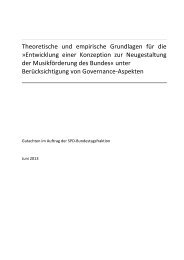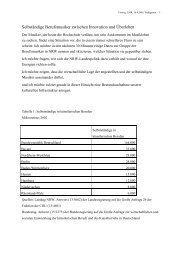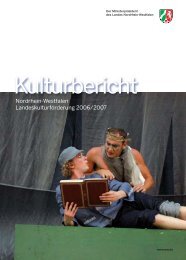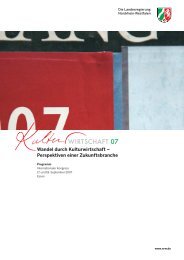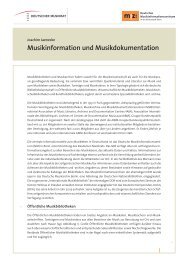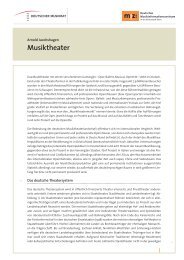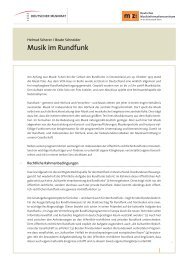SYMPHONY AND CHAMBER ORCHESTRAS - Miz.org
SYMPHONY AND CHAMBER ORCHESTRAS - Miz.org
SYMPHONY AND CHAMBER ORCHESTRAS - Miz.org
You also want an ePaper? Increase the reach of your titles
YUMPU automatically turns print PDFs into web optimized ePapers that Google loves.
Symphony and Chamber Orchestras |<br />
The overall figures show that publicly financed theatres and orchestras are<br />
more than just receivers of subsidies. Instead, they are influential players in the<br />
local economy. They constitute powerful forces of supply and demand at the re-<br />
gional level, creating bonds with highly skilled labour through their methods of<br />
production. This in turn leads to increased tax revenue for the municipality and al-<br />
lows local businesses to participate directly or indirectly in the theatres’ eco nomic<br />
activities.<br />
COLLECTIVE AGREEMENTS, PAY BRACKETS <strong>AND</strong> ORCHESTRA SIZE<br />
The salaries and working conditions of musicians employed in Kulturorchester<br />
are governed by a collective agreement known as the ‘Tarifvertrag für Musiker in<br />
Kulturorchestern’ (TVK). It applies across the board for most opera orchestras and<br />
some concert orchestras. This blanket salary situation for orchestras is the only one<br />
of its kind in the world. As a rule, for radio ensembles the special salary provisions<br />
of the various public-law broadcasting corporations apply instead. Many concert or-<br />
chestras have their own wage agreements which are based on the TVK but contain<br />
terms specific to the localities involved and often special provisions for concert tours.<br />
In the TVK area, which covers municipal and state orchestras, a distinction<br />
needs to be made in view of remuneration and ‘ranking’. Whereas the payrolls for<br />
opera orchestras are broken down into seven pay groups according to the size of<br />
the orchestra (referred to as a ‘membership size’ scheme), for concert orchestras the<br />
musicians are grouped according to a separate classification contract (‘concert or-<br />
chestra wage agreement’). A third option is an individual wage agreement specific<br />
to the orchestra in question (e.g. for the Berlin Philharmonic, the Munich Philhar-<br />
monic and the Leipzig Gewandhaus Orchestra). For most concert orches tras, how-<br />
ever, the basic orientation is towards the wage groups found in opera orchestras.<br />
The parties to the wage agreements for radio ensembles are the respective<br />
broadcasting corporations and the German Orchestra Union (Deutsche Orches-<br />
tervereinigung, or DOV) in its capacity as a union and professional association of<br />
orchestra musicians and radio chorus singers. The TVK and industry-wide collec-<br />
tive agreements supplementing the TVK, as well as all orchestra-specific collective<br />
agreements for municipal and state orchestras, are generally negotiated by the<br />
121




